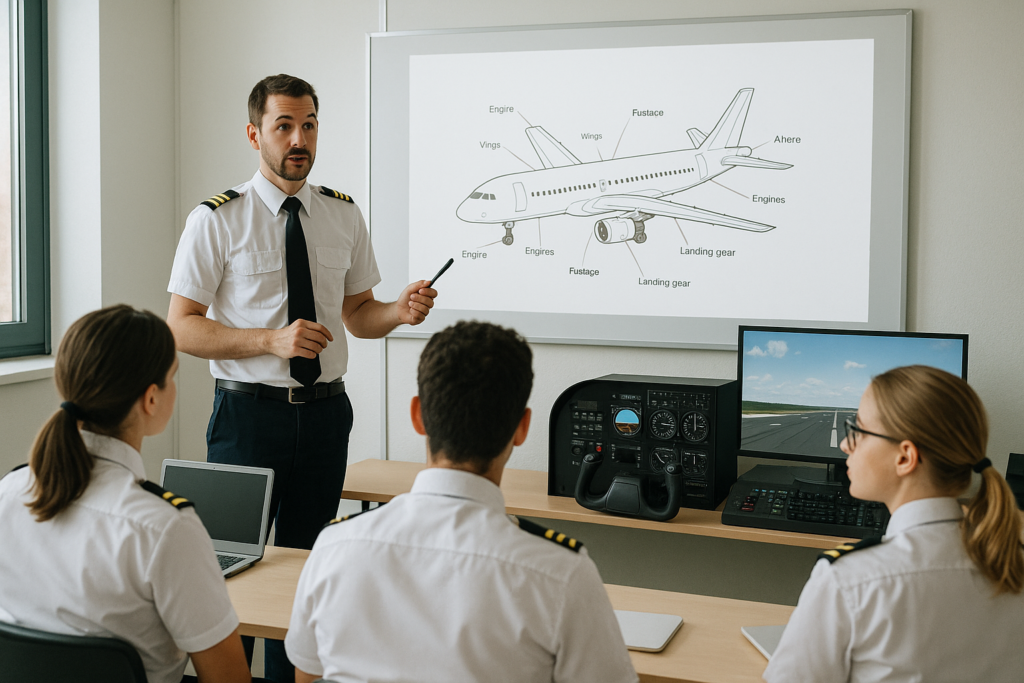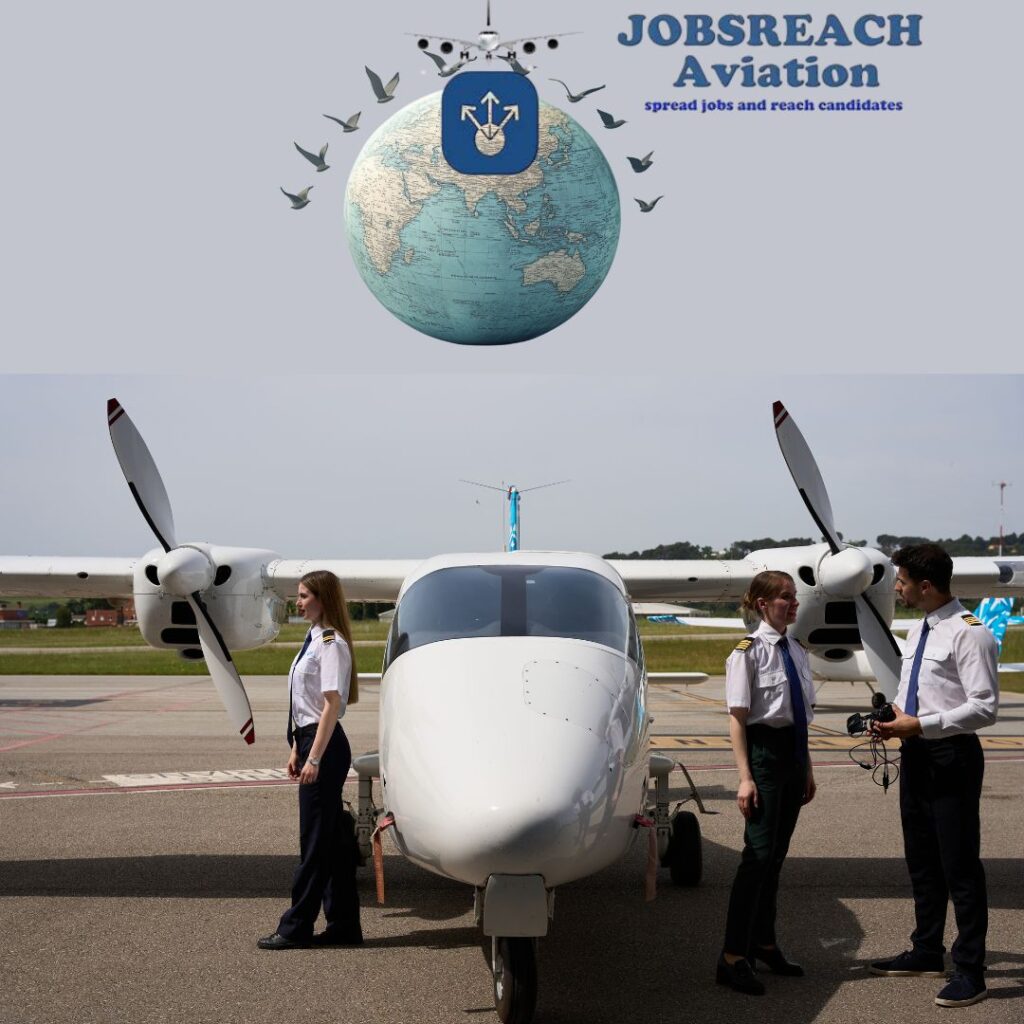Becoming a pilot is a dream shared by many, but turning that dream into reality requires choosing the right flight school. Across Europe and the United States, several world-class academies offer rigorous training, modern fleets, and structured programs designed to meet international aviation standards.
In this article, we explore what makes these schools stand out and what it takes to be eligible for admission.

🎓 Basic Eligibility to Join a Flight School
While every school has specific requirements, most pilot training programs — whether EASA or FAA regulated — follow similar eligibility criteria:
🧠 Educational Requirements
- Minimum education: High school diploma or equivalent (10+2 or A-Level).
- Preferred: Background in Science, Mathematics, or Engineering — especially Aeronautical Engineering or related disciplines.
- Some integrated ATPL (Airline Transport Pilot License) programs prefer candidates with a university degree.
🕒 Age Requirements
- Minimum age: 17–18 years to start flight training.
- Minimum 21 years for Airline Transport Pilot (ATPL) license issuance.
🩺 Medical Fitness
- Class 1 Medical Certificate (EASA or FAA, depending on region).
- Vision: 20/20 (corrected acceptable).
- No serious health conditions affecting flight safety.
- Passed by an authorized aviation medical examiner (AME).
🌍 Language Proficiency
- Must demonstrate English language proficiency (ICAO Level 4 or higher).
- Some European schools may require additional language assessment if English is not your first language.
✈️ Other Preferred Qualities
- Strong aptitude for mathematics and physics.
- Problem-solving skills and quick decision-making ability.
- Passion for aviation and willingness to commit to rigorous schedules.
- For some programs: clean background check and valid passport (for international students).
🌍 Top Flight Schools in Europe
| School | Location | Key Features | Eligibility Highlights |
|---|---|---|---|
| CAE Oxford Aviation Academy | Oxford, UK | One of the world’s best-known academies; strong airline partnerships (e.g., British Airways, easyJet). | High school diploma (Math & Physics preferred), Class 1 Medical, strong English skills. |
| L3Harris Airline Academy | UK, Portugal, & EU | Offers EASA and FAA training; known for integrated ATPL programs and airline placement. | 18+, good command of English, strong academics, Class 1 Medical. |
| FTEJerez | Spain | Excellent weather, strong airline pathways (e.g., Iberia, Aer Lingus). | Minimum 18 years, high school diploma, clean medical record. |
| BAA Training | Lithuania & Spain | EASA-approved modular and integrated programs, global presence. | 18+, fluent in English, physics & math background, medical certification. |
| Air Baltic Training Center | Latvia | Operates with an airline partner; excellent cadet programs. | Minimum 18, good academics, EASA Class 1 Medical. |
| OxfordSaudia Flight Academy | Saudi Arabia (EASA & GACA-approved) | State-of-the-art training in Middle East with European standards. | Degree or high school in science stream, English test, Class 1 Medical. |
🇺🇸 Top Flight Schools in the United States
| School | Location | Key Features | Eligibility Highlights |
|---|---|---|---|
| Embry-Riddle Aeronautical University | Florida & Arizona | Premier aviation university with B.S. degrees in Aeronautical Science; airline & research tie-ups. | High school diploma, strong math/physics foundation, Class 1 FAA Medical. |
| University of North Dakota (UND Aerospace) | North Dakota | University-based flight training with FAA programs and strong airline links. | High school diploma (preferably in science/engineering), good academic standing. |
| ATP Flight School | Multiple US states | Accelerated professional pilot program; pathways with regional airlines. | 18+, FAA Class 1 Medical, U.S. work eligibility, strong English. |
| Phoenix East Aviation | Florida | Offers full FAA training; suitable for international students. | High school diploma, Class 1 Medical, English proficiency (TOEFL if needed). |
| Paragon Flight Training | Fort Myers, FL | FAA-approved; offers structured and custom pilot pathways. | 18+, FAA medical, valid passport, proficiency in English. |
🧭 Choosing Between Europe & USA
| Factor | Europe (EASA) | USA (FAA) |
|---|---|---|
| License Recognition | EASA widely accepted across Europe, Asia, Middle East, and Africa. | FAA license accepted in the USA and some global carriers; may need conversion elsewhere. |
| Training Cost | €70,000–€120,000 | USD $60,000–$100,000 |
| Weather Conditions | Seasonal variations; Southern Europe offers year-round flying. | Favorable in Florida, Arizona, Texas (ideal for consistent flight hours). |
| Career Pathways | Airline cadet programs (Lufthansa, easyJet, Wizz Air). | Airline pipelines like Delta Propel, United Aviate, American Cadet Academy. |
| Visa Support | Available for EU/non-EU students via student visas. | M1/F1 student visas with optional work permissions. |
💼 Why Training Matters: Pathway to a Pilot Career
Pilot training is a significant investment, both financially and in time. However, with the global pilot shortage forecasted to exceed 600,000 new pilots by 2040, graduates from reputed schools stand at an advantage.
Airlines are actively partnering with academies to fast-track cadets, often sponsoring part of the training or offering employment guarantees after program completion.
📊 Reference:
Boeing Pilot & Technician Outlook 2024–2043
According to Boeing, the aviation industry will require over 600,000 new pilots globally by 2043 to meet fleet growth and replacement demand.

🌐 The Role of JobsReach Aviation
JobsReach Aviation is transforming how pilots and aviation professionals connect with global employers.
- ✈️ Secure profile management: Upload and verify pilot licenses, training records, and medical certificates.
- 💬 Direct communication: Built-in messaging to engage directly with airline recruiters.
- 🌍 Industry insights: Learn about aviation developments, hiring trends, and training opportunities.
- 🎓 Education partnerships: Featuring top aviation institutes and academies across Europe, the Middle East, and the USA.
It’s a dedicated aviation ecosystem designed to bridge the gap between aspiring pilots, flight schools, and airlines, eliminating the noise of general job platforms.
🧮 Comparing Program Types: Integrated vs Modular vs MPL etc.
- Integrated ATPL: Full-time, immersive. Typically ~18-24 months in Europe. It includes all theory, flight hours, simulator, etc. Faster, structured, but costlier.
- Modular: Train in parts; more flexibility, can pace modules over time. Good if working/studying concurrently. Lower upfront cost but total cost over time may be similar.
- MPL (Multi-Crew Pilot Licence): Focused on airline-style training emphasizing crew resource management early. Requires airline partners.
✈️ Flight Schools & Programs: Costs, Requirements, and Advantages
| School / Program | Location | Approx Cost | Key Eligibility Requirements | Advantages & Highlights |
|---|---|---|---|---|
| Aerocadet – Full Professional Airline Pilot Program (FPAP-EU) | Europe (Romania) | ~ US$67,250 (zero to ATPL without type-rating) (aerocadet.com) | • No experience required (“zero time” start) • Good English & aptitude • Class 1 Medical • Passoretical tests and screening • Internship commitment for instructor job option (aerocadet.com) | Integrated ATPL + instructors internship Guaranteed airline placement support Accommodation included Option for FAA ATPL / type-rating is possible (aerocadet.com) |
| Airbus Flight Academy (Europe Campus) | Angoulême, France | Varies; fees not always publicly listed; integrated ATPL cost in Europe often ~ €110,000 in many schools. (Flight Academy) | • Pass online assessment (math & English) • On-site assessment (aptitude, situational awareness) • Must meet visa / residence conditions if non-EU • Class 1 EASA Medical • Age likely 18+ (Airbus Aircraft) | High-quality assets: modern fleet, simulators, theoretical training in English Strong brand recognition Airline cadet pathways Good learning environment (weather, airspace) (Airbus Aircraft) |
| Green Flight Academy | Sweden | ~ EUR 104,220 for the Integrated ATPL (18 months) program (greenflightacademy.com) | • Meets the EASA approval • Medical certificate class 1 • Strong proficiency in English • Financial readiness for tuition + living costs over 18 months (greenflightacademy.com) | New modern aircraft, strong sustainability focus Payment sample plan by instalments Good employment connection and support Campus accommodation and support services included (greenflightacademy.com) |
| ATP Flight School (USA) | USA (multiple locations) | $86,995 → $116,995 depending on starting level (zero time to advanced fast-track) (https://atpflightschool.com/) | • At least high school diploma • Class 1 FAA Medical • English proficiency • If starting from zero, must complete PPL, then instrument, multi-engine etc. • Living & exam costs extra (ThePricer) | Recognized FAA training path Fixed-cost pricing (good for budgeting) Multiple centres so location flexibility Fast-track programs for serious candidates Large fleet & experienced instructors (ATP Flight School) |
| Fly School Air Academy | Europe | ≈ €80,000-€95,000 depending on program and simulator hours etc. (CPL/ATPL integrated) (https://www.flyschool.es/) | • No previous flight experience for “integrated” route • Must satisfy English and mathematics background • Class 1 Medical • Ability to commit to full-time training for 18-24 months (pilotnetwork.eu) | Includes significant simulator hours Multiple hours on B737/A320 sims Flight instructor course included in some cadet programs Good reputation and structured ADM (airline-style) prep (pilotnetwork.eu) |
| Airways Aviation | Europe (UK, France, Spain, Germany, Italy, Cyprus) & Global campuses | ~ €90,000-€130,000 for an integrated ATPL / MPL pathway from zero hours (exact cost depends on location) (https://www.airwaysaviation.com/) | Minimum age ~18 High school diploma or equivalent with strong maths & physics English proficiency (often ICAO Level 4 or higher) Class 1 Medical (EASA standard) Pass aptitude / assessment tests (eg situational awareness, psychometric) |
🏢 Other Private / Well-Known Schools in Europe & USA
| School | Location(s) | Key Programs | Qualification Requirements | Advantages |
|---|---|---|---|---|
| Sabena Flight Academy (now part of CAE Global) | Belgium (Brussels), also overseas campuses via CAE ✈️ (Sabena Engineering) | Integrated ATPL, Flight crew training, type rating, advanced courses. | Same basics: Secondary school, medical, English, minimum age. Also require mental & skills assessment. | |
| Other European Modular / Private Schools | EAS Barcelona (Spain), Aerofan FTO (Spain), various UK/Portugal/Italy based schools | PPL → CPL → ATPL modular or integrated, ME/IR, MCC etc. | Comparable entry requirements: Age, education, medical, English. Some modular routes are more flexible for working/part-time students. | |
| USA Private Flight Schools | Many FAA-approved schools across States (Florida, Arizona, etc.) | PPL, Instrument Rating, CPL, Multi-Engine, Flight Instructor, fast-track ATP | FAA medical, English, academic competency (high school + sometimes college), sometimes university pathway programs. | Advantage is good weather (especially in southern states), large availability, often lower cost per flight hour, strong post-training job market. |
What to Look for When Choosing a Private Flight School
- License standard (EASA, FAA, etc.) and recognition by airlines.
- Medical & age eligibility at the start.
- Fleet & training equipment, including simulators.
- Location/weather (to minimize delays due to weather).
- Cost vs funding options (scholarships, cadet partnerships).
- Graduate success and airline placement, or job-pathway promises.
- Flexibility (modular vs integrated) depending on your schedule and resources.
Things to Watch Out / Hidden Costs
- Living expenses: housing, food, transport; often not included in training fees. Schools in Eastern Europe are cheaper in this regard.
- Equipment & Uniforms: headset, flight bag, uniforms, iPad/tablet often extra.
- Exam & licence fees: theory exams, checkrides, license issuance may cost extra.
- Visa / Travel Costs for international students.
- Simulator or extra hours if weather or scheduling causes delays.
⚠️ Disclaimer
Program fees, entry requirements, and listed advantages may vary by location, exchange rate, and training type (MPL, ATPL, modular, or cadet).
It’s strongly recommended to contact each flight school directly for the most accurate, up-to-date information on costs, eligibility, course structure, and available financing options.
🚀 Final Thoughts
Whether you aspire to fly for a global airline or charter operator, choosing the right flight school is the most important first step.
With the aviation industry expanding rapidly across continents, now is the time to invest in quality training and platforms like JobsReach Aviation make it easier than ever to turn passion into a lifelong career in the skies.
Leave a Reply